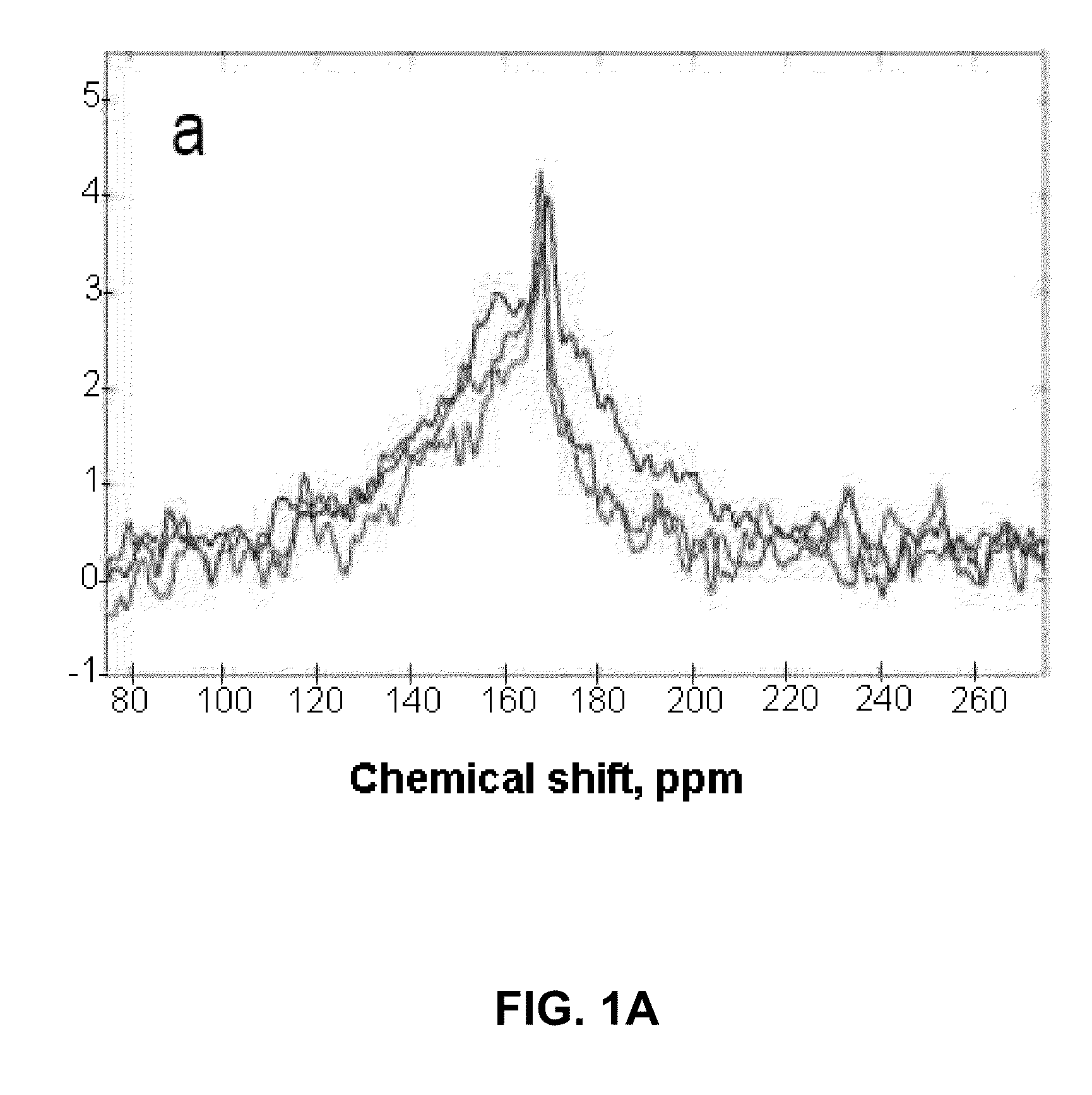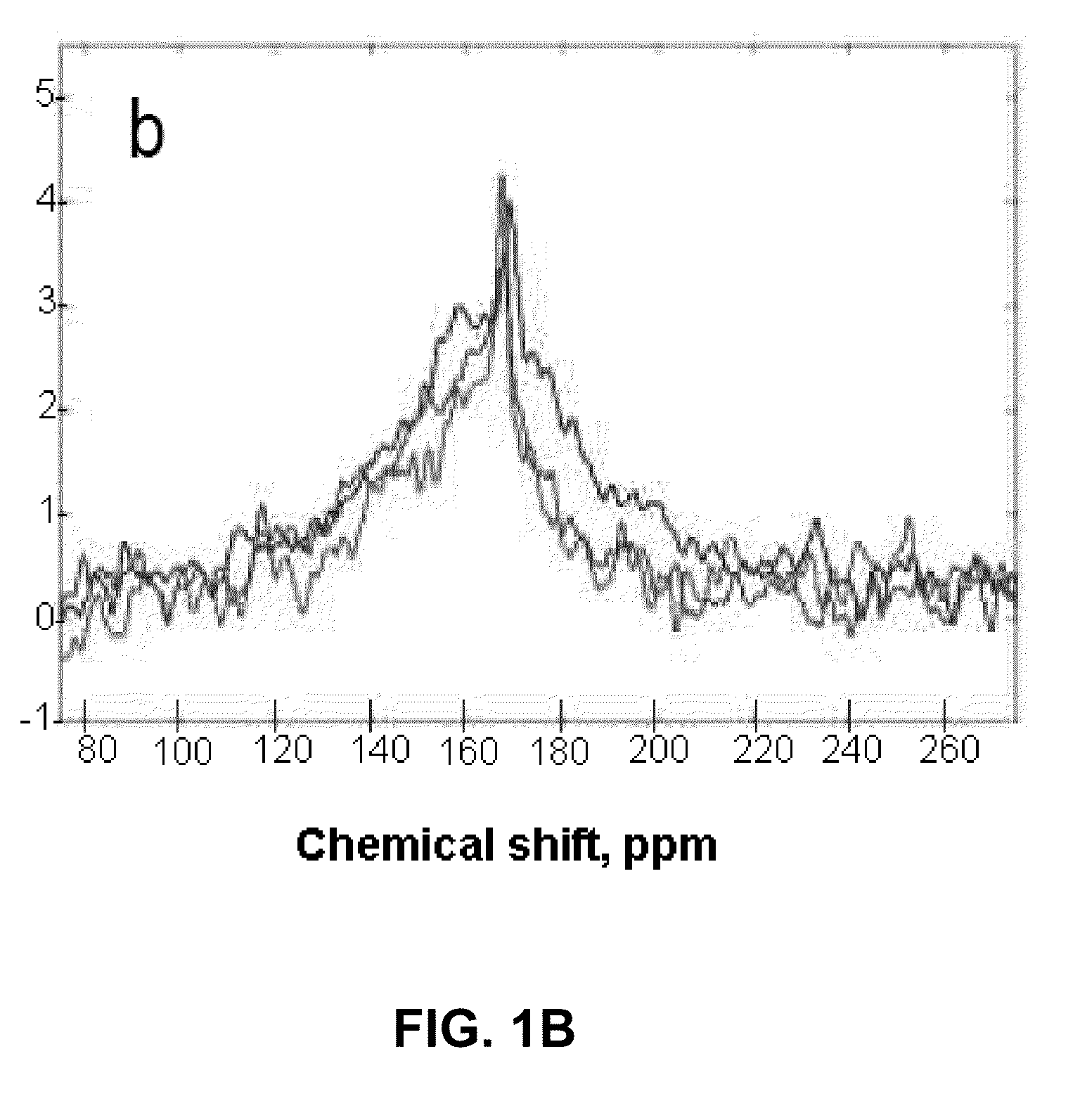Enhanced 13C NMR By Thermal Mixing With Hyperpolarized 129XE
a technology of 129xe and nmr, which is applied in the field of enhancement of nmr and mri signals, can solve the problems of significant limitations, insufficient sensitivity for the majority of in vivo applications, and inability to fully exploit the analytical potential of sup>13/sup>c nmr, so as to facilitate such research, improve nmr signal sensitivity, and significant polarization enhancement
- Summary
- Abstract
- Description
- Claims
- Application Information
AI Technical Summary
Benefits of technology
Problems solved by technology
Method used
Image
Examples
example 1
Development and Optimization of Equipment
[0054]This Example describes how the inventors constructed and optimized the equipment required for the polarization transfer experiments described in Example 3 below.
[0055]The main effort on this part of the project is focused on constructing and optimizing the equipment required for the polarization transfer experiments. In the preliminary experiments with hyperpolarized gas the species are mixed in the gas phase, the acetic acid being chosen as the 13C-molecule. The initial step of polarization transfer involves uniform mixing of xenon gas with acetic acid vapor to form the homogeneous phase. A gas line is constructed for gas mixing. The gas line is connected to a bag containing xenon and to a test tube containing acetic acid. The set up is evacuated prior to the gas fill to remove oxygen, an unwanted potential source of T1 relaxation.
[0056]The procedure for mixing the species is next developed and optimized. After the species are mixed, t...
example 2
Measurement of T1 Relaxation of 129Xe and 1-13-C—AcH
[0059]This Example describes the inventors' determination of two critical parameters for the successful performance of the polarization transfer experiments described in Example 3: the T1 relaxation times of both xenon-129 and 13C-acetic acid (1-13-C—AcH).
[0060]The critical parameters for successful performance of polarization transfer experiments are T1 relaxation times of both xenon and 13C-acetic acid (1-13-C—AcH). These parameters are measured prior to the transfer experiments according to the standard saturation recovery procedure. T1 of xenon gas is found to be 55±3 min, the value being independent of the magnetic field strength (two measurements are performed at 500 G and 5 G respectively). T1 of 1-13CAcH is measured to be 35 s and 10 min in liquid and solid states respectively. T1 of hyperpolarized 129Xe in gas mixture with 1-13C—AcH is determined to be 56±3 min. This value coincides with that for pure xenon gas within expe...
example 3
Polarization Transfer Between 13C and 129Xe
[0063]In this Example, the inventors demonstrate that the method of the invention can be used successfully to increase the sensitivity of 13C NMR / MRI by polarization enhancement of 13C nuclei in hydrogen-containing compounds. The specific 13C hydrogen-containing compound used in this Example is acetic acid, 1-13-C—AcH.
[0064]Preliminary Feasibility Study.
[0065]Here, we utilize the thermal mixing (TM) procedure to transfer spin polarization from hyperpolarized 129Xe to acetic acid 1-13CAcH. We mix the two species in the gas phase, after which the mixture is frozen with liquid N2. This approach overcomes the problem of limited 13C-species solubility in xenon. This report is the first study of the polarization transfer from 129Xe to 13C achieved by TM for a proton-containing molecule of biological relevance.
[0066]The 13C NMR polarization was enhanced by 10-fold compared to the equilibrium Boltzmann polarization at 4.7 T. The results presented h...
PUM
 Login to View More
Login to View More Abstract
Description
Claims
Application Information
 Login to View More
Login to View More - R&D
- Intellectual Property
- Life Sciences
- Materials
- Tech Scout
- Unparalleled Data Quality
- Higher Quality Content
- 60% Fewer Hallucinations
Browse by: Latest US Patents, China's latest patents, Technical Efficacy Thesaurus, Application Domain, Technology Topic, Popular Technical Reports.
© 2025 PatSnap. All rights reserved.Legal|Privacy policy|Modern Slavery Act Transparency Statement|Sitemap|About US| Contact US: help@patsnap.com



